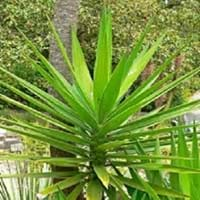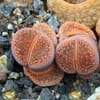Life Span
Perennial
Perennial
Type
Cactus or Succulent
Shrub
Origin
Southern Africa
Southwestern United States, Mexico
Types
Hoodia albispina, Hoodia flava, Hoodia bainii
Yucca aloifolia 'Purpurea' , Yucca aloifolia
Number of Varieties
Not Available
Habitat
Desert
coastal environs, Coastal sand dunes, mild coastal areas
USDA Hardiness Zone
12-15
7-9
Sunset Zone
12, 13, 21, 22, 23, 24
2a, 2b, 3a, 3b, 4, 5, 6, 7, 8, 9, 10, 11, 12, 13, 14, 15, 16, 17, 18, 19, 20, 21, 22, 23, 24
Habit
Clump-Forming
Rosette/Stemless
Minimum Height
Not Available
Minimum Width
Not Available
Flower Color
Red, Pink, Tan
White
Flower Color Modifier
Not Available
Not Available
Fruit Color
Not Available
Brown
Leaf Color in Spring
Blue Green, Gray Green
Blue Green
Leaf Color in Summer
Not Available
Blue Green
Leaf Color in Fall
Blue Green
Blue Green
Leaf Color in Winter
Blue Green, Gray Green
Blue Green
Leaf Shape
Not Available
long with sharp edges
Plant Season
Spring, Summer, Fall, Winter
Spring, Summer, Fall, Winter
Sunlight
Full Sun, Partial Sun
Full Sun
Growth Rate
Very Slow
Very Slow
Type of Soil
Loam, Sand
Loam, Sand
The pH of Soil
Acidic, Neutral, Alkaline
Acidic, Neutral, Alkaline
Soil Drainage
Well drained
Well drained
Bloom Time
Spring
Late Spring, Early Summer
Tolerances
Drought
Drought, Salt
Where to Plant?
Container, Ground, Pot
Ground
How to Plant?
Seedlings
Cuttings, Divison
Plant Maintenance
Low
Medium
Watering Requirements
Water when top layer of soil becomes dry
Keep the Soil well drained, Needs very little water
In Summer
Lots of watering
Lots of watering
In Spring
Average Water
Moderate
In Winter
Once a week
Average Water
Soil pH
Acidic, Neutral, Alkaline
Acidic, Neutral, Alkaline
Soil Type
Loam, Sand
Loam, Sand
Soil Drainage Capacity
Well drained
Well drained
Sun Exposure
Full Sun, Partial Sun
Full Sun
Pruning
No pruning needed in the early stages
Remove damaged leaves, Remove dead branches, Remove dead leaves
Fertilizers
No fertilizers needed
All-Purpose Liquid Fertilizer
Pests and Diseases
Red blotch
Leaf spot, Scale
Plant Tolerance
Drought, Full Sun, Shade areas
Drought, Salt
Flower Petal Number
Single
Single
Foliage Texture
Bold
Bold
Foliage Sheen
Matte
Matte
Attracts
Flies, Insects
Butterflies, Not Available
Allergy
Dry Mouth
Unknown
Aesthetic Uses
Not Used For Aesthetic Purpose
Borders, Cottage Garden, Wild gardens, Woodland margins
Beauty Benefits
Weightloss
Not Available
Environmental Uses
Food for insects
Air purification
Medicinal Uses
Weight loss
No Medicinal Use
Part of Plant Used
Stem
Not Available
Other Uses
Can be made into a herbal tea, Used for its medicinal properties
Beneficial species for attracting pollinators
Used As Indoor Plant
Yes
No
Used As Outdoor Plant
Yes
Yes
Garden Design
Container, Houseplant, Rock Garden, Wall
Rock Garden, Wall, Wildflower
Botanical Name
Hoodia gordonii
Yucca gloriosa
Common Name
ǁhoba, Ghaap
spanish dagger
In Hindi
Hoodia
Spanish Bayonet
In German
Hoodia
Spanish Bayonet
In French
Hoodia
Spanish bayonet
In Spanish
Hoodia
Spanish bayonet
In Greek
Hoodia
Spanish bayonet
In Portuguese
Hoodia
Spanish bayonet
In Polish
Hoodia
Spanish bayonet
In Latin
Hoodia
Spanish bayonet
Phylum
Magnoliophyta
Magnoliophyta
Class
Magnoliopsida
Liliopsida
Order
Gentianales
Liliales
Family
Apocynaceae
Agavaceae
Clade
Angiosperms, Asterids, Eudicots
Angiosperms, Monocots
Tribe
Stapeliae
Not Available
Subfamily
Asclepiadoideae
Agavoideae
Number of Species
Not Available
Season and Care of Hoodia and Spanish Bayonet
Season and care of Hoodia and Spanish Bayonet is important to know. While considering everything about Hoodia and Spanish Bayonet Care, growing season is an essential factor. Hoodia season is Spring, Summer, Fall and Winter and Spanish Bayonet season is Spring, Summer, Fall and Winter. The type of soil for Hoodia is Loam, Sand and for Spanish Bayonet is Loam, Sand while the PH of soil for Hoodia is Acidic, Neutral, Alkaline and for Spanish Bayonet is Acidic, Neutral, Alkaline.
Hoodia and Spanish Bayonet Physical Information
Hoodia and Spanish Bayonet physical information is very important for comparison. Hoodia height is 30.50 cm and width 30.50 cm whereas Spanish Bayonet height is Not Available and width Not Available. The color specification of Hoodia and Spanish Bayonet are as follows:
Hoodia flower color: Red, Pink and Tan
Hoodia leaf color: Blue Green and Gray Green
Spanish Bayonet flower color: White
- Spanish Bayonet leaf color: Blue Green
Care of Hoodia and Spanish Bayonet
Care of Hoodia and Spanish Bayonet include pruning, fertilizers, watering etc. Hoodia pruning is done No pruning needed in the early stages and Spanish Bayonet pruning is done Remove damaged leaves, Remove dead branches and Remove dead leaves. In summer Hoodia needs Lots of watering and in winter, it needs Once a week. Whereas, in summer Spanish Bayonet needs Lots of watering and in winter, it needs Average Water.





